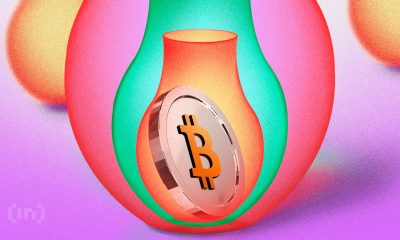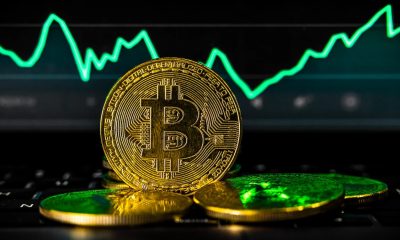Bitcoin
Bitcoin Drops as China Escalates Trade War With 34% Tariff on US

On April 4, 2025, China responded to the latest US tariff imposition by imposing an additional 34% tariff on all goods imported from the US. This escalates the already tense trade war between the two largest economies in the world.
Bitcoin dropped 3% within hours of the announcement, briefly falling below $82,000. This latest development has caused concern among investors, analysts, and participants in the cryptocurrency sector about its potential impact.
Bitcoin Investors Worry About The Escalating Trade War
According to Xinhua News Agency, China will impose a 34% tariff on all products imported from the US starting April 10. Xinhua reported that the US’s “Reciprocal Tariff” violated WTO rules, severely damaging the legal and legitimate rights of WTO members and undermining the multilateral trade system and the international trade order based on rules.
“This is a typical act of unilateral hegemony that harms the stability of the global economic and trade order. China firmly opposes this,” The spokesperson for the Ministry of Commerce said in an interview about China’s lawsuit against the US’s “Reciprocal Tariff” at the WTO.
Previously, President Trump had imposed a 34% tariff on China in addition to the 20% tariffs already imposed in two phases. This means a total of 54% tariffs were applied to China.
News from China has caused concern among crypto investors. On April 4, Bitcoin’s price dropped from $84,600 to $82,000, a 3% decrease.
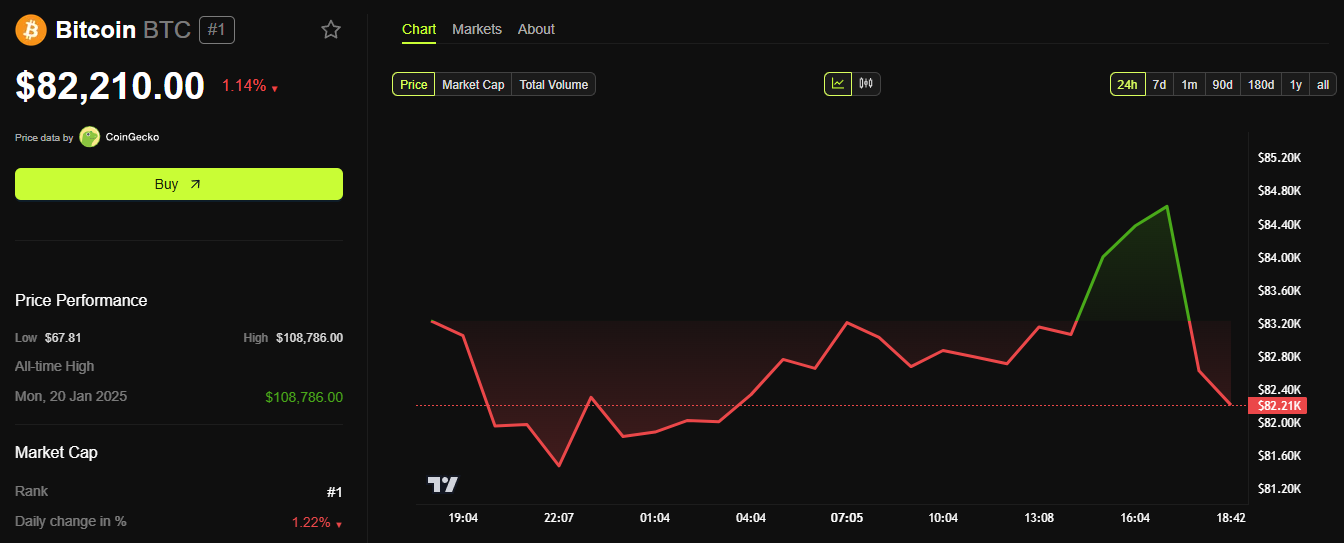
At the same time, following the news, the Long/Short ratio of Bitcoin dropped below 1, indicating a growing sentiment for short-selling, which has become dominant in the market.

Both Bitcoin and other markets have been affected. The S&P 500 fell from 5,260 points to 5,250 points, while the Dow Jones Industrial Average dropped from 41,100 points to 40,500 points. China’s actions have raised concerns about the potential escalation of the global trade war.
“The ‘Third World War’ of the trade war has begun,” The Kobeissi Letter commented.
What Will Happen to Bitcoin When The US-China Trade War Escalates?
This cryptocurrency, often praised as a hedge against economic instability, tends to behave like a risky asset during sudden uncertain periods. Historical patterns support this reaction—during the US-China trade war in 2018-2019, Bitcoin experienced significant sell-offs as tariffs escalated, only recovering when the narrative of value preservation took precedence.
A significant portion of the global cryptocurrency hardware supply chain comes from China, where companies like Bitmain dominate the production of ASIC mining machines—important devices for Bitcoin mining.
With the US now facing a 34% tariff on technology imports from China, the cost of importing these mining machines is expected to rise dramatically. Bitcoin miners in the US, already facing high energy costs and competitive pressure on hashrate, may see their profits shrink further.
However, the long-term outlook for Bitcoin may not be as bleak as the initial market reaction. Some analysts suggest that prolonged trade wars and economic friction could enhance Bitcoin’s appeal as a decentralized asset unaffected by government intervention. If tariffs lead to inflation or weaken fiat currencies like the USD, investors may turn to cryptocurrencies as a safe haven.
“It’s not gold, and it’s not the yen. Instead, Bitcoin is emerging as a risk-dynamic asset – one that doesn’t crumble like high-growth stocks but also doesn’t attract the same flight-to-safety flows as traditional safe havens,” Nexo Dispatch Editor Stella Zlatarev told BeInCrypto.
This sentiment aligns with research indicating that instability often causes initial price drops but can pave the way for growth as acceptance increases.
Disclaimer
In adherence to the Trust Project guidelines, BeInCrypto is committed to unbiased, transparent reporting. This news article aims to provide accurate, timely information. However, readers are advised to verify facts independently and consult with a professional before making any decisions based on this content. Please note that our Terms and Conditions, Privacy Policy, and Disclaimers have been updated.
Bitcoin
5 Facts About Bitcoin’s Creator
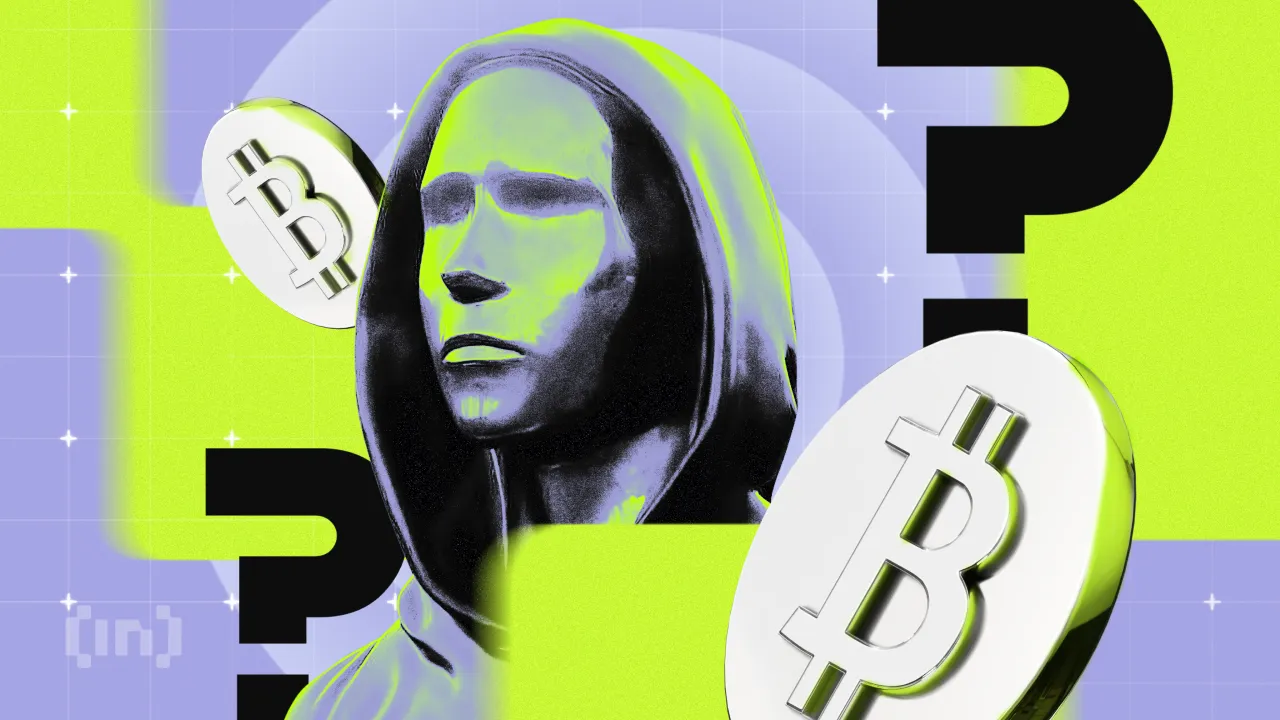
April 5, 2025, marks what would be the 50th birthday of Satoshi Nakamoto—the pseudonymous creator of Bitcoin. This alleged birthday is based on the date listed in his P2P Foundation profile.
While Nakamoto’s true identity remains unconfirmed, his legacy continues to shape the digital financial landscape. Here are five facts about the elusive Bitcoin architect:
April 5 Wasn’t Random
Nakamoto listed April 5, 1975, as his birthday—exactly 42 years after the US government banned private gold ownership under Executive Order 6102 on April 5, 1933, to stabilize the dollar.
Bitcoin, by contrast, was designed to be a decentralized, deflationary alternative to fiat currency. Notably, BTC difficulty adjustment happens every 2016 block—2016 being 6102 in reverse.
Satoshi Nakamoto’s Bitcoin Fortune Remains Untouched
Satoshi’s wallet, believed to hold 1.096 million BTC, has remained untouched since early 2010. Over the past decade, its value has risen more than 333-fold, now exceeding $91 billion.
Despite the wallet’s inactivity, CoinJoin transactions are regularly sent to its address. Some view this as an act of homage or a method of obfuscation.

Still No Definitive Identity
In March 2024, a UK court ruled that Australian computer scientist Craig Wright is not Satoshi, calling his claims “deliberately false.”
An October 2024 HBO documentary controversially pointed to Canadian developer Peter Todd, who strongly denied any connection.
More recently, internet theories have speculated on Jack Dorsey’s possible ties, though no evidence supports the claim. Nakamoto’s identity remains the internet’s most persistent mystery.
The Genesis Block’s Silent Message
Embedded in Bitcoin’s first block is the headline: “The Times 03/Jan/2009 Chancellor on brink of second bailout for banks.” The line is from a UK newspaper.
It is seen as a critique of centralized monetary policy and remains one of Nakamoto’s only public statements beyond technical documentation.
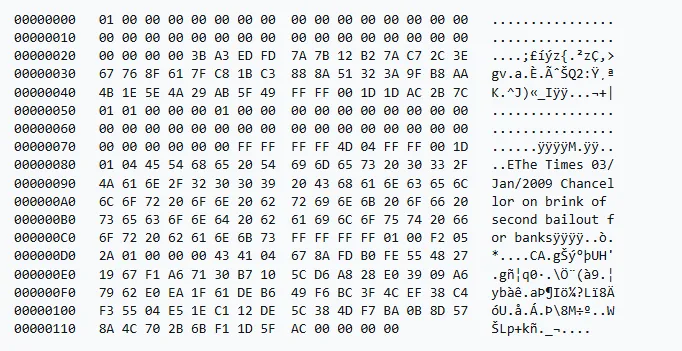
Bitcoin’s Design Still Holds
Fifteen years after its launch, Bitcoin remains secure and deflationary by design. Nakamoto’s codebase, while modified and improved by the open-source community, still forms the foundation of the network, securing over $1.6 trillion in value.
Disclaimer
In adherence to the Trust Project guidelines, BeInCrypto is committed to unbiased, transparent reporting. This news article aims to provide accurate, timely information. However, readers are advised to verify facts independently and consult with a professional before making any decisions based on this content. Please note that our Terms and Conditions, Privacy Policy, and Disclaimers have been updated.
Bitcoin
Bitcoin Eyes Breakout as Global M2 Hits Record $108 Trillion

The global M2 money supply has surged to an all-time high of $108.4 trillion, raising fresh questions about Bitcoin’s next move.
The milestone comes amid escalating economic uncertainty following former President Donald Trump’s new “Liberation Day” tariffs and China’s swift retaliatory measures, which together have roiled global markets.
What is M2 and Why Does It Matter for Bitcoin?
Despite the extreme volatility over the past two weeks, Bitcoin’s average value has remained almost unchanged.
Analysts claim that Bitcoin’s latest volatility reflects macroeconomic fears and fluctuating long/short ratios – but the largest cryptocurrency is nowhere near a bear market.
This is largely due to the historical correlation between rising M2 levels and significant Bitcoin rallies.
M2 is a broad measure of a country or region’s money supply. It includes physical cash, checking and savings deposits, and other liquid assets that can be quickly converted to cash.

When M2 increases, it typically signals greater liquidity in the financial system. It simply means more money that often seeks returns in riskier assets such as equities, real estate, or cryptocurrencies like Bitcoin.
Past surges in the M2 money supply have preceded major Bitcoin rallies. Following the COVID-era stimulus programs in 2020-2021, the US M2 supply jumped by over 25%.
This correlated with Bitcoin’s rise from under $10,000 in mid-2020 to an all-time high of over $69,000 by November 2021. Analysts point to a similar pattern today, albeit with a lag.
“Market proponents say that Trump’s tariffs are primarily a negotiation strategy, and their effect on businesses and consumers will remain manageable. Adding to the uncertainty are the inflationary pressures that could challenge the US Federal Reserve’s rate-cutting outlook. Also, resolving the debt ceiling remains a pressing issue, as the Treasury currently relies upon ‘extraordinary measures’ to meet US financial obligations. The exact timeline for when these measures will be exhausted is unclear, but analysts anticipate they may run out after the first quarter,” said Maksym Sakharov, Co-Founder of WeFi Deobank.
Also, Bitcoin’s price often trails global M2 growth by roughly two months.
With M2 accelerating since late February and the current spike taking it to its highest level ever, market watchers suggest that Bitcoin could see a delayed but strong upside if liquidity continues to expand.
However, macroeconomic headwinds could temper near-term gains. Trump’s tariff shock and China’s tit-for-tat response have already triggered the steepest Wall Street losses in five years.
Investors may delay allocating capital to high-volatility assets until trade tensions stabilize.
Still, with M2 surging and Bitcoin supply capped, the setup for a renewed bullish move remains in place. That is if historical patterns hold and markets regain confidence.
Disclaimer
All the information contained on our website is published in good faith and for general information purposes only. Any action the reader takes upon the information found on our website is strictly at their own risk.
Bitcoin
Vitalik’s L2 Roadmap, XRP Unlock and More

This week in crypto, a lot happened across different ecosystems, despite the broader market’s prevailing bearish sentiment. Besides Bitcoin’s (BTC) drop to a 7-day low of $81,400, here are this week’s biggest updates.
For starters, crypto markets could have a new Ethereum Layer-2 roadmap. Meanwhile, Hyperliquid users could soon start enjoying better security.
Vitalik Buterin Pushes for Ethereum L2 Roadmap
Co-founder Vitalik Buterin outlined a roadmap for Ethereum’s Layer-2 (L2) ecosystem, emphasizing decentralization, security, and cost-efficiency.
He advocates for a model that reduces centralization risks while ensuring user-friendly experiences for developers and investors.
Buterin also reiterated his commitment to open-source funding within the Ethereum community. This stance comes as the phrase “public goods” has become politically and socially loaded. The phrase is often used in ways that prioritize perception over impact.
Against this backdrop, Buterin proposed shifting the focus from “public goods funding” to “open-source funding.” He said this would encourage greater financial support for projects that enhance network security and scalability.
“A big part of the reason why the term ‘public good’ is vulnerable to social gaming is precisely the fact that the definition of ‘public good’ is stretched so easily,” Buterin argued.
His vision aligns with ongoing efforts to strengthen Ethereum’s L2 playing field and make it more resistant to potential censorship or network failures.
Hyperliquid Tightens Security After JELLY Crisis
Decentralized trading platform Hyperliquid also features among the key headlines this week in crypto. The platform announced new security measures following the JELLY incident, which resulted in substantial losses for users.
To prevent future incidents, the platform has increased monitoring, enhanced smart contract audits, and introduced stricter withdrawal limits.
Hyperliquid’s response aims to restore confidence in decentralized finance (DeFi) platforms amid rising security concerns.
“Hyperliquid is not perfect, but it will continue to iterate and grow through the collective efforts of builders, traders, and supporters,” the network explained.
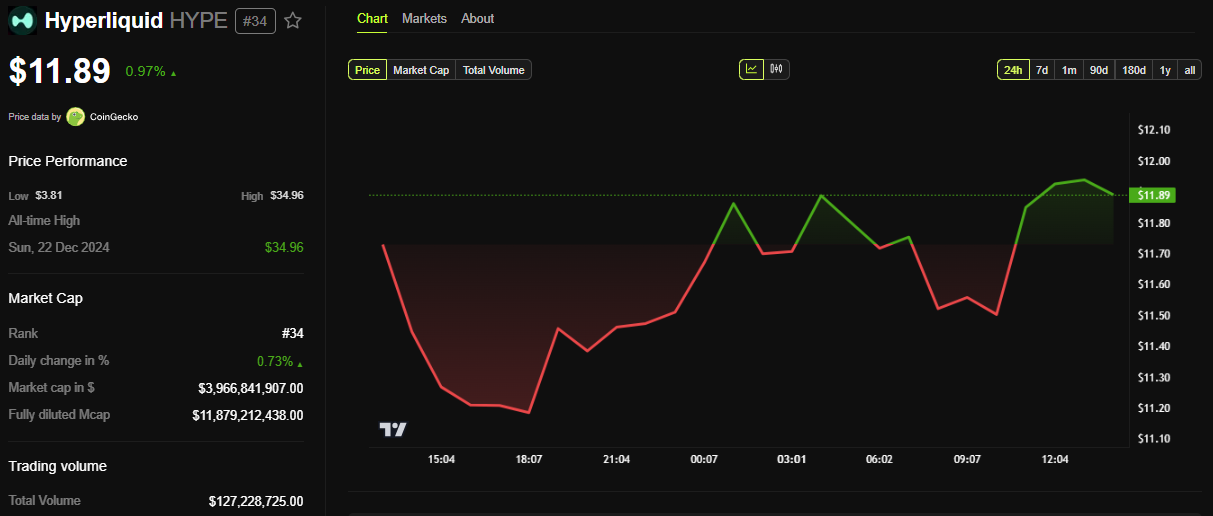
BeInCrypto data shows that Hyperliquid’s HYPE token price was $11.89 as of this writing, up by a modest 0.97% in the last 24 hours.
Crypto Markets, Equities Sync Amid Recession Fears
Another headline this week in crypto was how the digital assets industry continues to mirror traditional financial (TradFi). Specifically, more than ever, the crypto market appears synchronized with indices like the S&P 500 and Nasdaq.
The synchrony comes as investors react to growing recession concerns. Bitcoin and Ethereum have followed similar downturns seen in stock markets, reinforcing the argument that cryptocurrencies are increasingly correlated with broader economic conditions.
With macroeconomic uncertainty looming, analysts warn that crypto could further decline if economic conditions worsen. However, some argue long-term investors may find opportunities in current market lows.
According to former BitMEX CEO Arthur Hayes, Bitcoin could reach $250,000 by year-end. However, this forecast is contingent on the Federal Reserve (Fed) shifting to Quantitative Easing (QE) to support markets.
Meanwhile, former Goldman Sachs executive Raoul Pal pointed to macroeconomic indicators that suggest a Bitcoin rally is imminent. He shared a chart correlating the global M2 money supply and Bitcoin’s price.
Based on history, Bitcoin tends to rise around 10 weeks after M2 increases. Pal’s analysis suggests that Bitcoin may soon enter a bullish phase.
“The waiting game is almost over…the 10-week lead is my preferred… but,” Pal stated.
Ripple Unlocked $1 Billion in XRP
Also, this week in crypto, Ripple released another 1 billion XRP from its escrow, increasing selling pressure on the token.
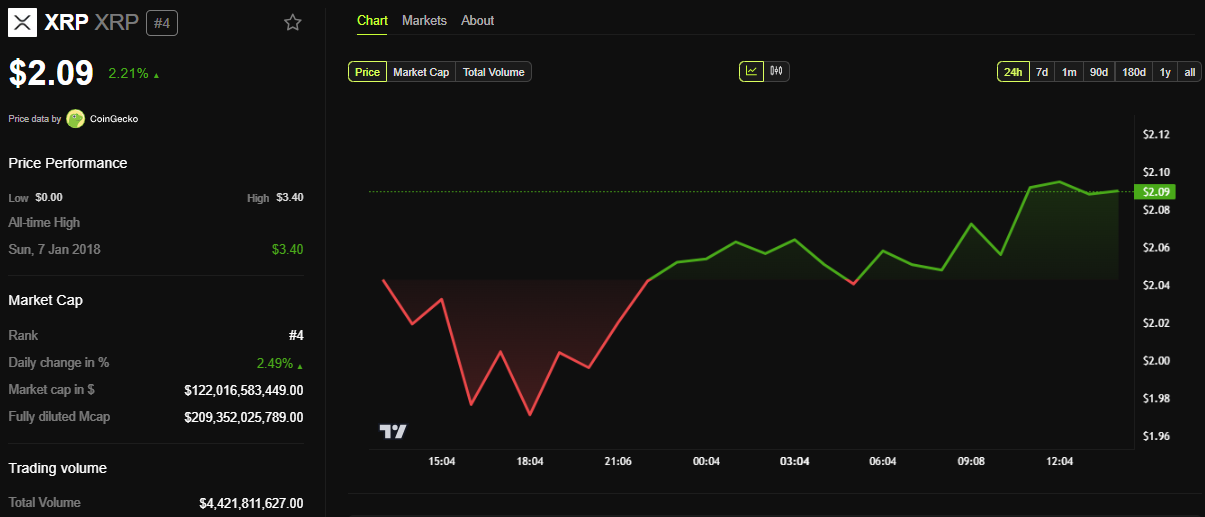
Historically, such unlocks have been followed by price declines. This aligns with recent Keyrock research that showed that 90% of unlocks create negative price pressure.
The tokens were moved from the “Ripple (27)” escrow address to two operational wallets, “Ripple (12)” and “Ripple (13).” This suggested the intention to distribute or sell XRP.
Investors remain cautious, watching for signs of potential accumulation. Meanwhile, others anticipate further downside as XRP struggles to regain upward momentum amid broader market uncertainty.
Notwithstanding, there are other positive developments for the XRP market. According to Glassnode data, Retail investors are choosing XRP over Bitcoin, and nearly half of XRP’s realized cap is increasing.
Another bullish fundamental for XRP this week is Coinbase’s filing for a futures contract offering in the Ripple token. The move indicates shifting regulatory tides in the US and also bolsters XRP ETF (exchange-traded funds) approval odds.
Standard Chartered Predicts Crypto Winners
Standard Chartered also made it to the top headlines this week in crypto. The bank identified Bitcoin (BTC) and Avalanche (AVAX) as the primary beneficiaries of a potential post-Liberation Day crypto market surge.
The bank suggests that favorable macroeconomic conditions and increasing institutional adoption could propel these assets higher in the coming months.
“We expect volatility to edge gradually lower once the ETF market matures, increasing Bitcoin’s share of an optimal gold-BTC portfolio. Access plus lower volatility could see Bitcoin reach the $500,000 level before Trump leaves office,” wrote Geoff Kendrick, Head of Digital Asset Research at Standard Chartered, in an email to BeInCrypto.
This forecast aligns with the growing narrative that institutional interest will play a key role in shaping the next phase of the crypto market cycle. However, skeptics remain cautious, citing regulatory uncertainty and potential economic headwinds as factors that could delay or dampen such a rally.
Disclaimer
In adherence to the Trust Project guidelines, BeInCrypto is committed to unbiased, transparent reporting. This news article aims to provide accurate, timely information. However, readers are advised to verify facts independently and consult with a professional before making any decisions based on this content. Please note that our Terms and Conditions, Privacy Policy, and Disclaimers have been updated.
-

 Bitcoin24 hours ago
Bitcoin24 hours agoWhy Bitcoin Is Gaining Appeal Amid Falling US Treasury Yields
-

 Market22 hours ago
Market22 hours agoXRP Price Vulnerable To Falling Below $2 After 18% Decline
-

 Bitcoin20 hours ago
Bitcoin20 hours agoVitalik’s L2 Roadmap, XRP Unlock and More
-

 Altcoin16 hours ago
Altcoin16 hours agoAnalyst Predicts XRP Price To Reach Double Digits By July 21 Cycle Peak
-

 Market21 hours ago
Market21 hours agoWill the SEC Approve Grayscale’s Solana ETF?
-

 Ethereum20 hours ago
Ethereum20 hours agoEthereum Whales Buy the Dip – Over 130K ETH Added In A Single Day
-

 Market17 hours ago
Market17 hours agoPEPE Price Breaks Ascending Triangle To Target Another 20% Crash
-

 Altcoin17 hours ago
Altcoin17 hours agoPi Network Under Fire As PiDaoSwap Launches NFTs On Binance Chain




